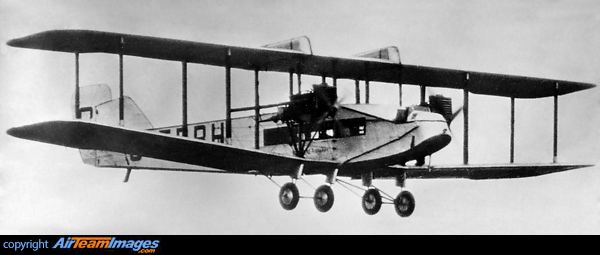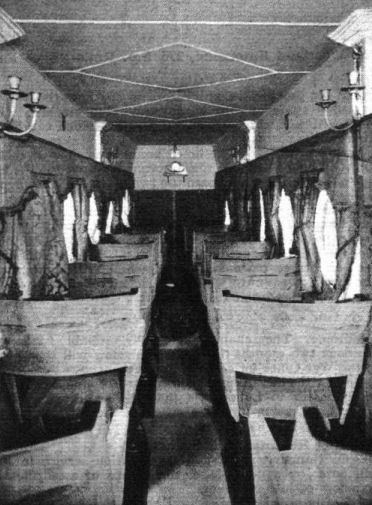Top speed 167 km/h Length 18 m First flight 1919 | Wingspan 23 m Retired 1934 | |
 | ||
Handley page type w series
The Handley Page W.8, W.9 and W.10 were British two- and three-engine medium-range biplane airliners designed and built by Handley Page.
Contents
- Handley page type w series
- W8b
- W8e
- W8f and W8g Hamilton
- W9a Hampstead
- W10
- Other variants
- Use
- Accidents and incidents
- Operators
- Specifications W8f
- References

The W.8 (also known as the H.P.18) was the company's first civil transport aircraft. It housed two crew in an open cockpit and 15 passengers in an enclosed cabin. Powered by two 450 hp (336 kW) Napier Lion engines the prototype first flew on 4 December 1919, shortly after it was displayed at the 1919 Paris Air Show at Le Bourget. It has the distinction of being the world's first airliner to be designed with an on-board lavatory. The W.8 was subsequently revised to give the W.8b, W.8e (H.P.26), W.9 (H.P.27) and W.10 (H.P.30)

W8b

To meet an Air Ministry ruling the capacity was reduced to 12 passengers and the fuel tanks were moved. In 1921 the Air Ministry ordered three aircraft for use by Handley Page Transport. These were built as the W8b and powered by the Rolls-Royce Eagle IX and operated by Imperial Airways on services to Paris and Brussels. Another aircraft was delivered to SABENA in 1924 and three more were license built by SABCA in Belgium.
W8e

To reduce the risks involved with engine failure, the W.8e was developed with one 360 hp (270 kW) Rolls-Royce Eagle IX in the nose and two 240 hp (180 kW) Siddeley Pumas in the normal position. The first W8e was sold to Sabena, which had ten more built in Belgium by SABCA.
W8f and W8g Hamilton
One three-engine W.8f was built with cabin heating (derived from air circulated around the hot engine exhausts).

The W8f was modified in 1929 as the W8g with an improved tail and rudder design from the W10 and the third engine was removed and the other two replaced with the Rolls-Royce Eagle IX.
W9a Hampstead

Was a three-engined version with more powerful 385 hp (290 kW) Armstrong Siddeley Jaguar IV radial engines. It was operated by Imperial Airways and created a record on the London-Paris route of 86 minutes. In 1926, the engines were replaced by three 420 hp (310 kW) Bristol Jupiters. The aircraft was moved to Australia but was destroyed by an accident after nine months.
W10
A twin-engined variant with the 450 hp (340 kW) Napier Lion for Imperial Airways (four built).
Other variants
Use
When Imperial Airways introduced the Handley Page HP.42 in 1931, the W series aircraft were retired. Aircraft were used by private operators for display and joy riding, but the most important development concerned the two surviving W10s which were converted to tanker aircraft by Sir Alan Cobham.
Accidents and incidents
Operators
Specifications (W.8f)
Data from British Civil Aircraft since 1919 Volume 2
General characteristics
Performance
